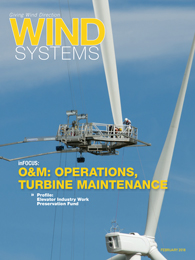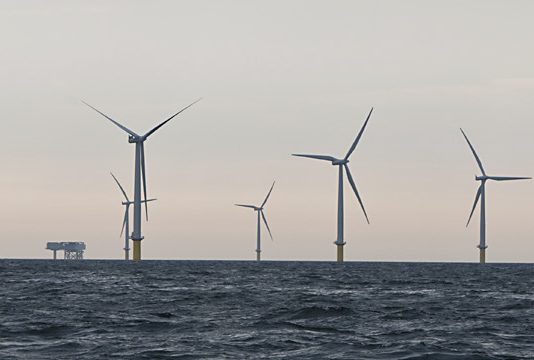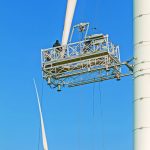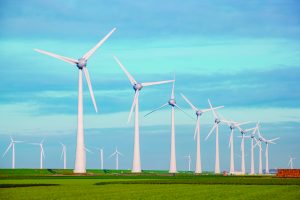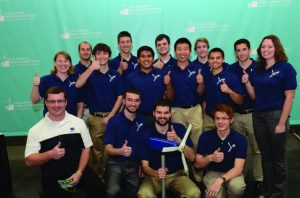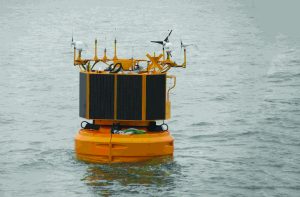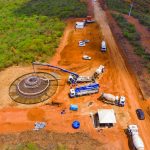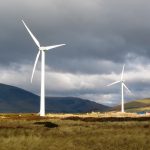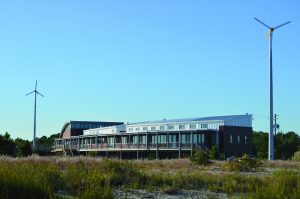Wind turbines are built to last 20 years. But as assets approach that 20-year lifespan, companies involved in wind-farm assessments such as UL are working to increase that lifespan through a process called lifetime extension.
“Turbines are designed to operate over a 20-year lifetime,” said Bruce Bailey, renewable energy business manager at UL. “But design margins within projects typically allow them to operate longer than that. The lifetime extension service is a way to assess the remaining useful life of wind projects, and this helps wind-plant owners and operators understand what their options are for their projects.”
Many project owners want to reassess the long-term value of their investments in the middle of their investment life — not necessarily at the end — in order to optimize the returns on their portfolio, according to Bailey, who has more than 40 years of experience in wind energy.
“It’s a little like managing a portfolio of stocks and mutual funds,” he said. “A portfolio is initially set up to achieve a targeted return at an acceptable risk level, and periodically that portfolio is reassessed because some of the numbers in the portfolio have deviated from expectations or overall market conditions have changed. So reassessing is just good business practice. Of course, wind-farm assets are much less liquid than stocks, and their year-to-year performance is usually less volatile, but nonetheless, the same basic principles apply.”
Overall safety
A lifetime extension plan also can benefit the overall safety of a wind farm and its assets, according to Jose Javier Ripa, business development manager for UL.
“We help ensure the lowest cost of energy by keeping the highest levels of safety for the users and also the producers,” he said. “From that point, we started creating services to ensure that our producers have all the necessary information on hand to make optimal decisions for when they are thinking of extending the life of their assets. Our main goal is to help — with our expertise and tools — our clients make a proper decision.”
That safety factor is important when it comes to turbine load levels, according to Ripa, who is responsible for UL’s wind life extension business in Spain and Latin America. Turbines are designed to tolerate certain load levels, and they can affect a turbine in two ways: extreme loads and fatigue, where loads are accumulated through millions of cycles.
The load levels can cause internal damage to a structure.
“Wind conditions, poor maintenance, or turbines operating over the load limits can cause dramatic failure rate increases,” Ripa said. “The producer is facing high safety risks. And those safety risks can be risks for the workers working on the turbine, doing operations, doing maintenance, or risks for people or animals living near the turbine. So there are safety risks, which, in the end, can have economic consequences and also can have a consequence on people’s safety.”
The “real situation”
Implementing a lifetime extension often can boil down to what Ripa calls the “real situation.”
“The real situation means: What are the real conditions at the site?” he said. “How is the wind? How is the operation? How is the maintenance? Once you know the real conditions, you can put those conditions into certain models, which determine how those conditions are affecting the life of the different turbines. Once you know the projection of the life of the turbine, you have much more accuracy to determine the best alternatives for the extension of the life of those assets.”
The degree to which the operating environment of wind projects is accurate is the key to evaluating how much of a lifetime extension is necessary, according to Bailey.
“Some projects do a good job of monitoring site wind conditions and others such as operational conditions, exposure to lightning strikes, and number of starts and stops under normal and emergency operation,” he said. “It requires good record keeping and good data history of the operating environment. The better data you have, the better the project’s track record is documented, and the more accurate the simulations will be. That can also be augmented with inspections. And at some point you can get into measurements, which is more of a data-driven approach. Projects vary in terms of the quality of monitoring and the ability of acquiring high quality of data over a period of time. That is something we have to address.”
Basically, poorly monitored projects can lead to higher uncertainties, Bailey said.
Regulations
Regulations can often play a part in a lifetime extension project, according to Bailey. There are about a quarter million turbines operating around the world, and several thousand in Europe are already 20 years old or older.
“In Germany, for example, once a turbine exceeds its design lifetime, new rules kick in requiring inspections of turbines,” he said.
In the U.S., the situation often reverts to local jurisdictions, and it can vary from area to area, Bailey said.
So there are a number of dynamics at play for an asset owner.
“Lifetime extension services allow for the verification of how well the project actually is performing and what the actual health of the components are,” Bailey said. “And because the design conditions for the project may vary from the actual operating conditions of the project, it’s that difference between the two that helps define the remaining useful life of the project. So from a business point of view, understanding the health of the asset, the need for continued investment, and the need to enhance the return on the investment are just options from a business point of view.”
There are other implications as well, including the future cost of energy for the project’s expected lifetime and what new environmental permits are required if any significant project changes are being made through repowering, according to Bailey.
New technology
Technological advancements have also helped owner-operators consider a lifetime extension, Ripa said.
Bailey agreed, citing the ability to monitor an operating environment using Lidar, for example, and smarter systems and advanced monitoring software.
“There are different ways of extending the life of a turbine,” Ripa said. “You can keep everything as it is, but you can also change some things. You can change certain operating parameters; you can change components. But the more things you change, the more you get closer to repowering.”
Repowering is different from life time extension in that full repowering involves removing and reducing the number of turbines at a site, but still retaining the same rated power, he said.
Bailey said there is a spectrum of options.
“You can leave a project operating physically the same but change some controls to help reduce loads,” he said. “You can replace some components, which starts to get into partial repowering.”
Certain components have a shorter lifetime, so part of a lifetime extension plan can focus on replacing them, Bailey said.
When it comes to deciding on a lifetime extension plan or various levels of repowering, it all boils down to being financially driven, according to Bailey. But depending on the circumstances, those decisions are made on a case-by-case basis.
“Through fact-finding and analysis, you make the appropriate decision on what to change,” he said. “It could be software or hardware or a combination of the two. It can also be O&M practices that could extend the life of the investment. It’s just another element to be aware of.”
For more information, go to industries.ul.com/energy/wind.



















